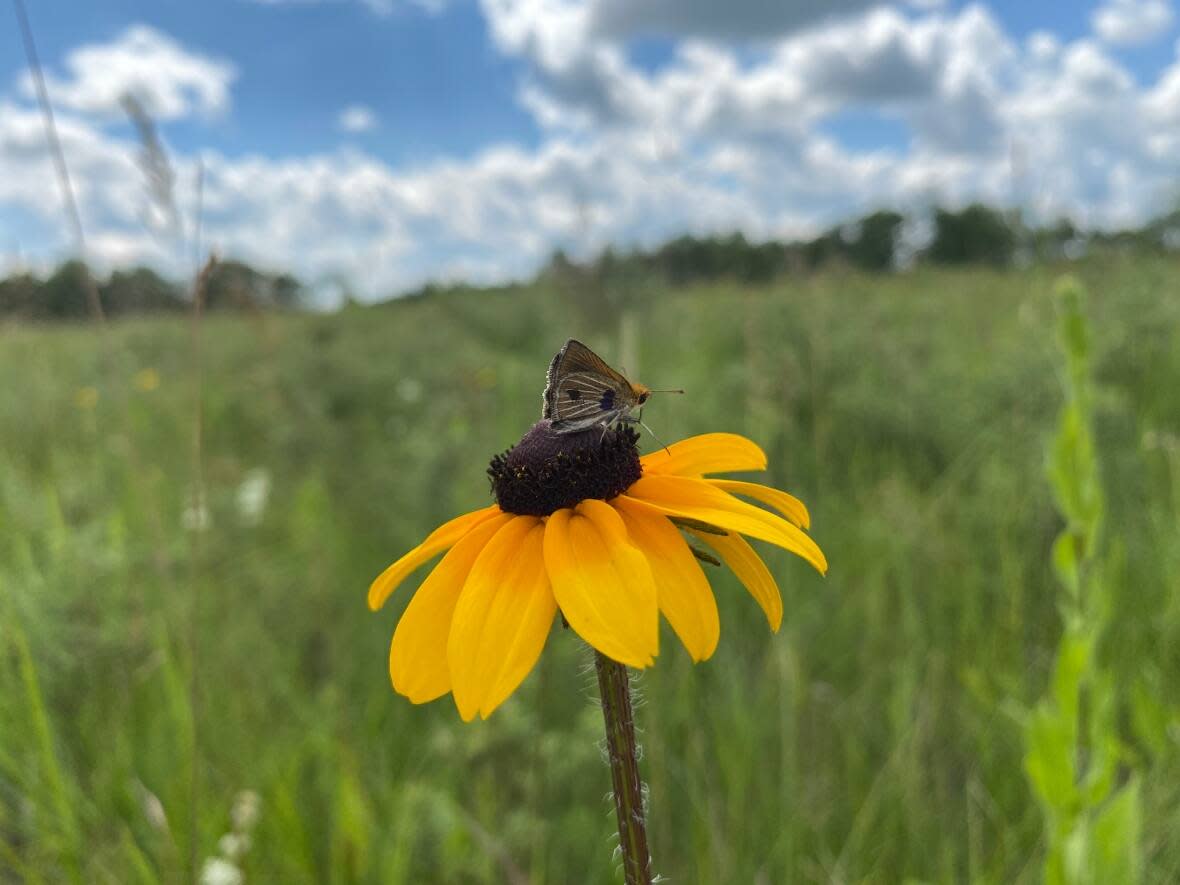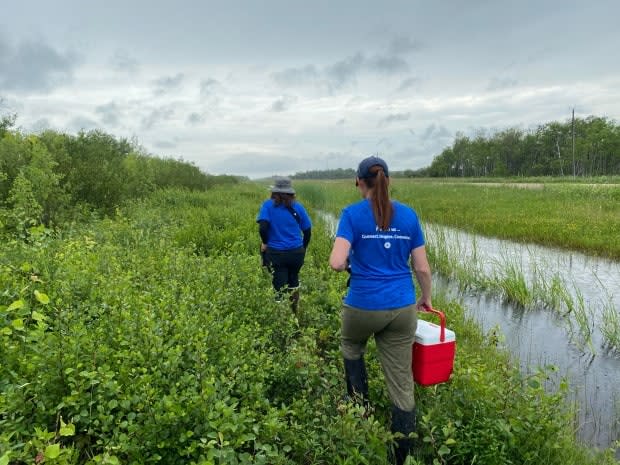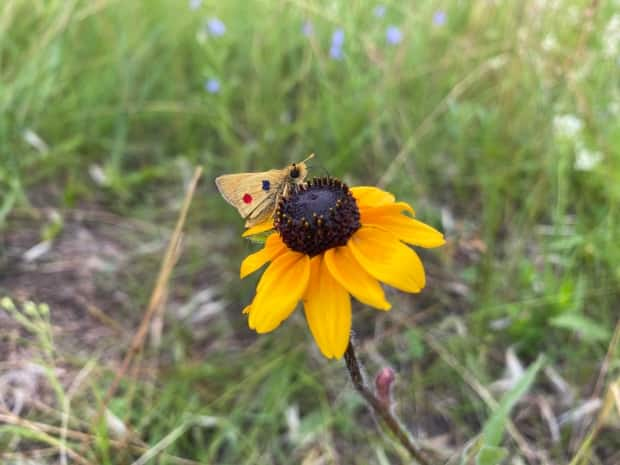How Winnipeg zoo workers are helping keep endangered prairie butterflies from extinction in the wild

The numbers of endangered butterflies in the Prairies are slowly creeping up thanks to a team of dedicated specialists in Manitoba, but more work needs to be done to protect their habitats to ensure the pollinators' populations can continue to increase.
Over three weeks in July, Assiniboine Park Conservancy staff released 191 critically endangered Poweshiek skipperling butterflies onto Nature Conservancy of Canada properties in the rural municipality of Stuartburn, southeast of Winnipeg. The butterflies are raised at the Assiniboine Park Zoo until they are old enough to survive on their own.
"This year we released as many back into the wild as there were just a few years ago, so that's pretty phenomenal," Ashleigh Westphal, a research conservation specialist with the Assiniboine Park Conservancy, said in an interview on Thursday.
Staff also released 16 endangered Dakota skipper butterflies at a site in the Interlake region for the first time since the butterfly conservation program started in 2018.
That might not sound significant, but any new introductions are important, because that creates more genetic diversity and places individuals in the wild so they have a higher chance of encountering each other, Westphal said.

"Even though the numbers might sound small ... that can make a pretty huge difference when you're looking at an area where there's maybe only, who knows, maybe a couple dozen to begin with. That can be potentially doubling what is out there in that particular area."
Both the skipperling and skippers are known as habitat specialists, meaning they rely on very specific grassland ecosystems to survive, said Melissa Grantham, a conservation biologist with the Nature Conservancy of Canada in Manitoba.
Much of their habitat has been lost, resulting in the dramatic decline of multiple grassland species. Habitat loss is believed to be one of the contributing factors leading to the near extinction of Poweshiek skipperling.
Butterflies are sensitive to changes in their environment and are often an indicator of the overall health of an ecosystem.
Other factors contributing to population declines include the increased use of pesticides, effects of climate change and extreme weather events.
Tall grass prairie preservation
In addition to releasing the butterflies out into the landscape, the Nature Conservancy of Canada is working to emulate the natural disturbances tall grass prairies experienced prior to urbanization, to ensure the landscape isn't overtaken by forest, which further threatens the skippers and skipperlings.
On its tall grass prairie reserves in the RM of Stuartburn, and in other areas that are privately owned where there's been observed populations of the butterflies, the nature conservancy prescribes some cattle grazing to emulate historical bison grazing, as well as controlled wildfires, Grantham said.
Without grazing, these prairie sites are at risk of becoming overgrown with shrub and forest, which can lead to the loss of important biodiversity and habitats.

"Even just in the area where the Poweshiek are, folks can help maintain those those open prairie habitats," Grantham said. "We're relying on those good partnerships with folks who want to help out."
Although butterflies are a small, seemingly insignificant species, Grantham says they are key to the ecosystem.
"All species have a role in the ecosystem. All species interact with other species, whether it's insect-to-insect or insect-to-plant or plant-to-people. All species have a role in a place," she said.
Biodiversity in the landscape is part of what keeps these ecosystems healthy, Westphal said.
"It's just incredibly important that we protect every aspect of it, even the butterflies that are so small that you might miss when you're out on your walk. They have an incredibly important role in the ecosystem," she said.


